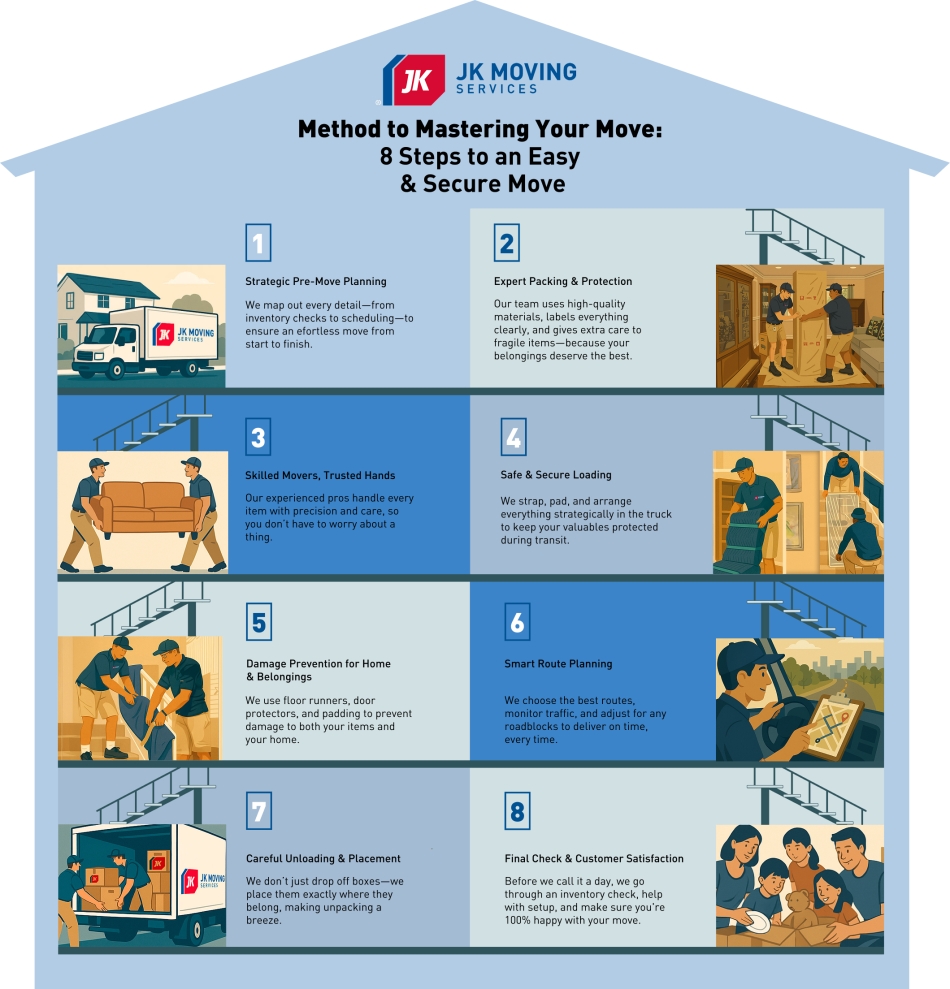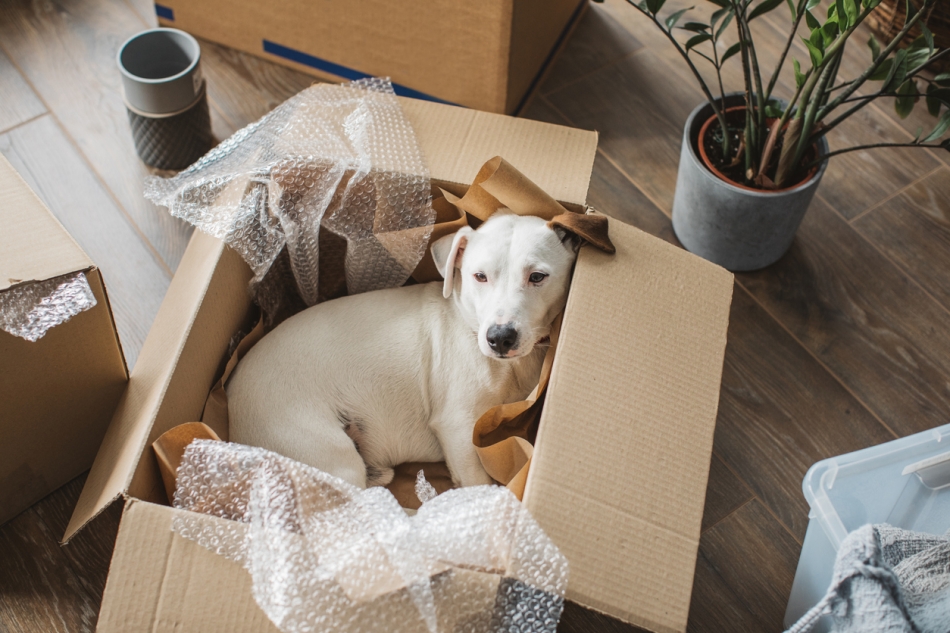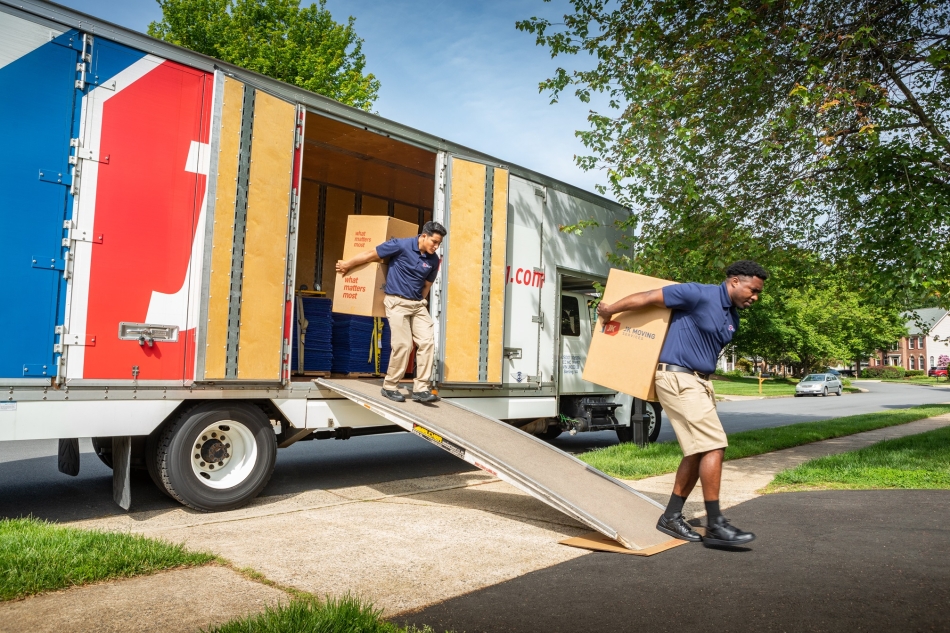Moving can be one of life’s biggest stressors. The key to a stress-free move is proper planning. Start early to keep yourself as organized as possible. Use the following moving checklist (download a copy) to start you on the right path to a worry-free move. You can also review these moving tips to make your relocation easier for extra guidance and organization strategies.
What do I need to do before moving?
Get started with your move planning at least two months in advance, and follow the detailed timeline below to help you plan a successful move.
What to do 8 weeks before moving
- Create a “move file” for quotes, receipts, and other paperwork.
- Get estimates from top-rated movers. (For interstate moves, confirm that the mover is registered with the Federal Motor Carrier Safety Administration and has a U.S. DOT number.)
- Review Your Rights and Responsibilities When You Move from the U.S. Department of Transportation.
- Set a moving budget
- Notify landlord (if renting)
- Take inventory of all items
What to do 7 weeks before moving
- Label items as move, sell, donate, or discard.
- Host a garage sale and/or post items for sale online.
- Start using up frozen foods and household cleaners.
- Develop a plan for jewelry, legal documents, plants, and other items you’ll personally transport to your new home.
- If you’re planning an interstate move, ask your insurance agent if your homeowner’s policy needs updating to ensure your belongings are covered during the relocation.

What to do 6 weeks before moving
- If you are packing yourself, start packing items you use least often, and label each box with the content and the intended new room.
- Book your move and coordinate valuation coverage for your belongings.
- File your change-of-address with the U.S. Postal Service.
What to do 4-5 weeks before moving day
 Arrange for disconnect/connect of services (water, electric, cable, etc.) at both locations.
Arrange for disconnect/connect of services (water, electric, cable, etc.) at both locations.- Make travel arrangements for your pets, and put copies of their medical and immunization records into your move file.
- Dispose of flammables and other explosive items on the What Not to Pack list.
What to do 2-3 weeks before moving day
- Make sure all the prescriptions you’ll need during the move are filled.
- Notify service providers and account holders of your move, including banks, streaming subscriptions, and county tax assessors.
- Confirm travel arrangements for family and pets.
- Plan meals to use up perishable food.
What to do 1 week before moving day
- Drain gas and oil from lawn equipment and heaters.
- Pack a box of “first night essentials” for your new home.
- Empty, defrost, and clean your refrigerator/freezer at least 48 hours before the move.
- Need last-minute packing help? Call your move coordinator.
What needs to be done on moving day and beyond?
Your moving day has finally arrived. Follow the moving planner below to help you navigate your moving and delivery days and beyond

Moving day checklist
- Be available to direct the movers, answer their questions, and monitor their progress as they inventory the status and condition of your belongings.
- Carefully read all documents (like an order for service or bill of lading) before signing. And be sure to keep your bill of lading until all your goods are delivered, the charges are paid, and any claims are settled.
- Before the moving truck departs, check all rooms and closets to ensure you’ve left nothing behind.
- Double-check the driver’s destination address, and give the driver your mobile number and email in case of an emergency.
Delivery day
- Be available to answer questions and supervise the placement of boxes and belongings.
Check off items as the crew unloads the truck. - Be prepared to pay for your move-in full according to the terms of your agreement. (This is required for your goods to be unloaded from the truck.)
- Note missing or damaged items on the inventory list before you sign any documents.
After the move
- Unpack essentials first
- Keep all receipts and documents in your move file, and store it in an easy-to-remember location.
- If items are missing or damaged, contact your move coordinator as soon as possible to file a formal claim.
Moving can be a daunting task, but with proper planning, it can be a worry-free experience. This ultimate moving checklist will help keep you organized throughout the entire moving process and ensure you don’t forget anything important. From starting your planning process early to making sure all your belongings arrive at your new home safely, with this helpful guide you’ll be well-prepared to handle all the challenges that come with moving, allowing you to focus on settling into your new home. So, take a deep breath, stay organized, and happy moving!


